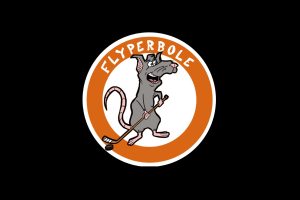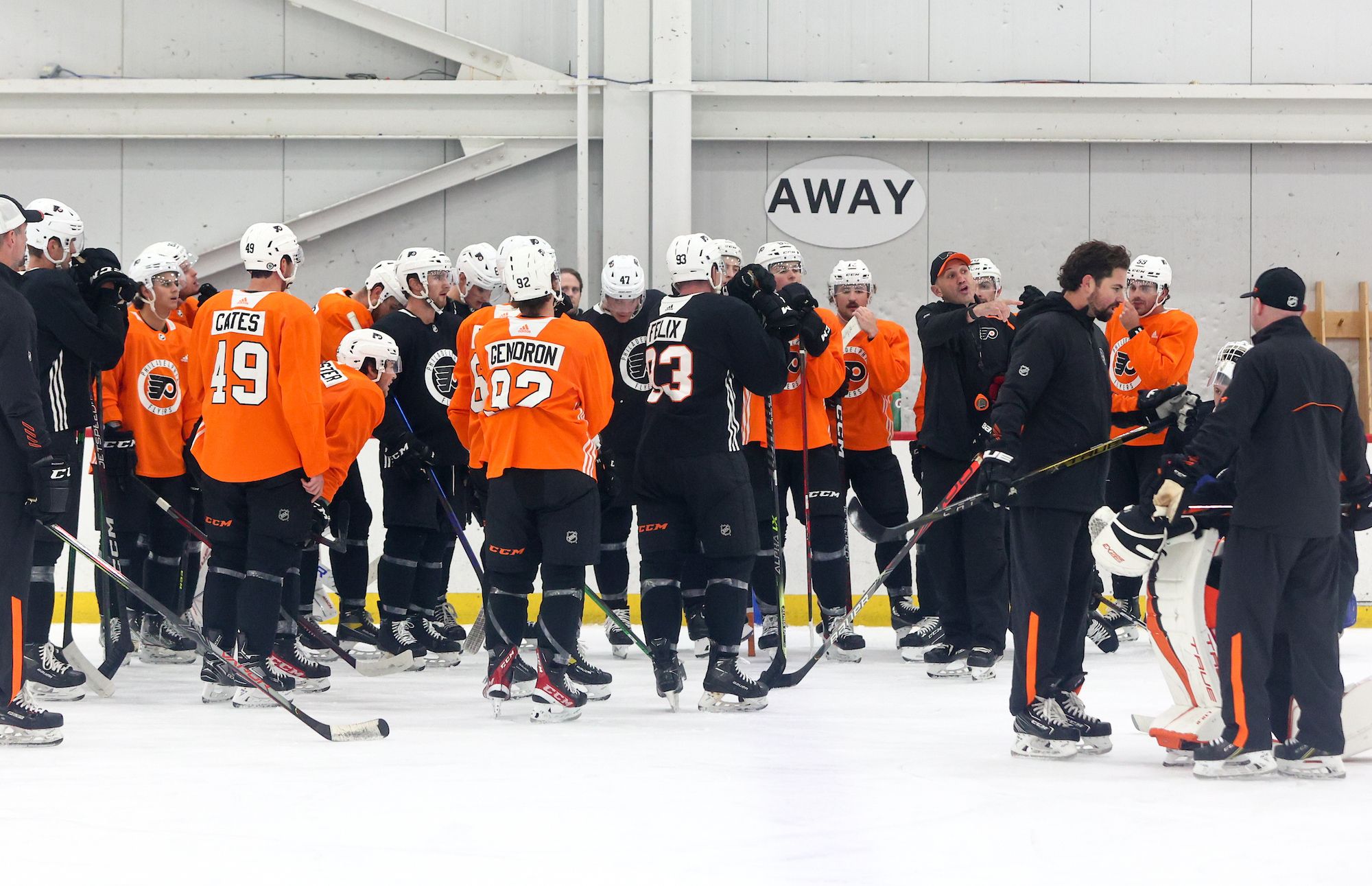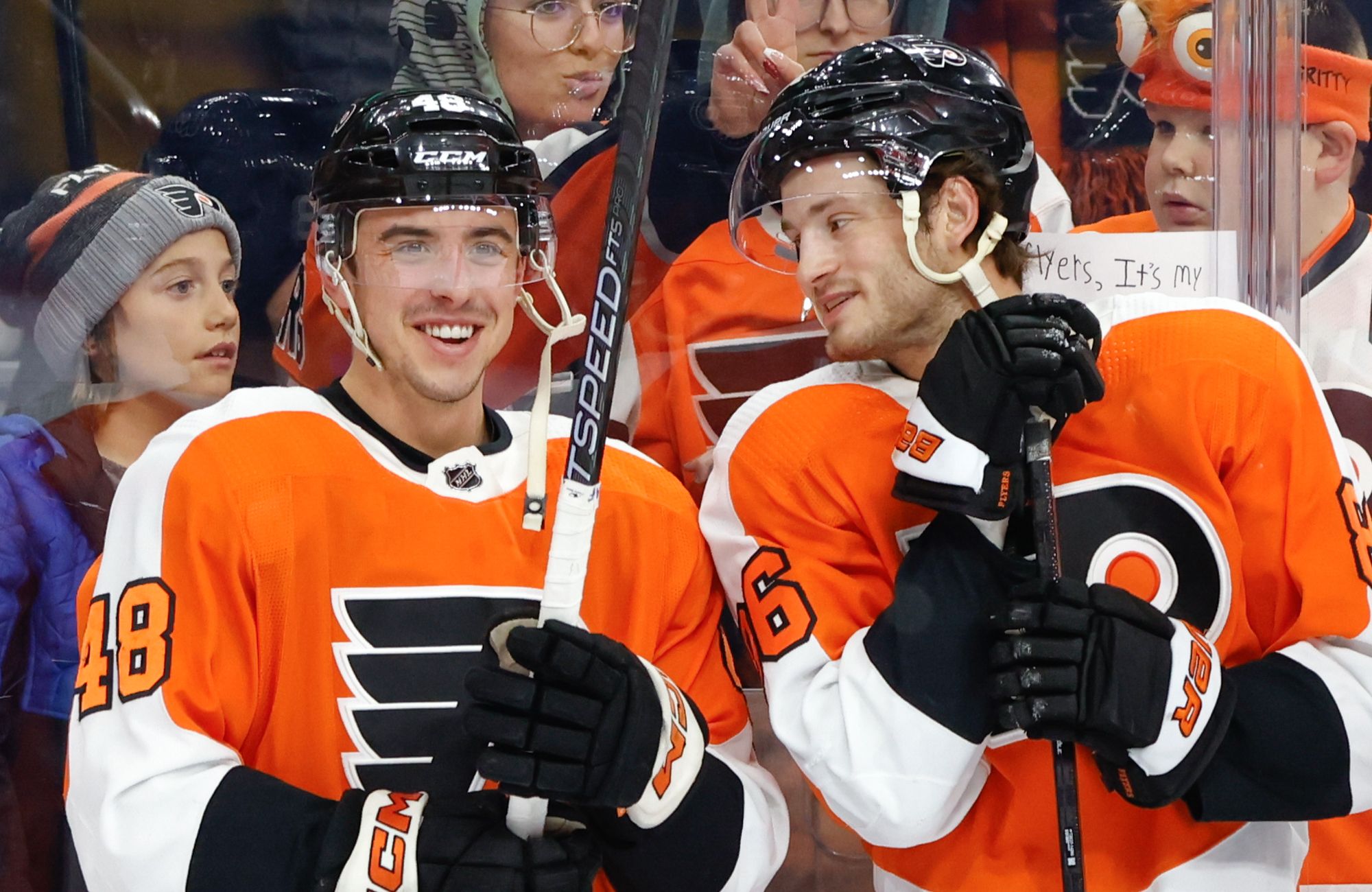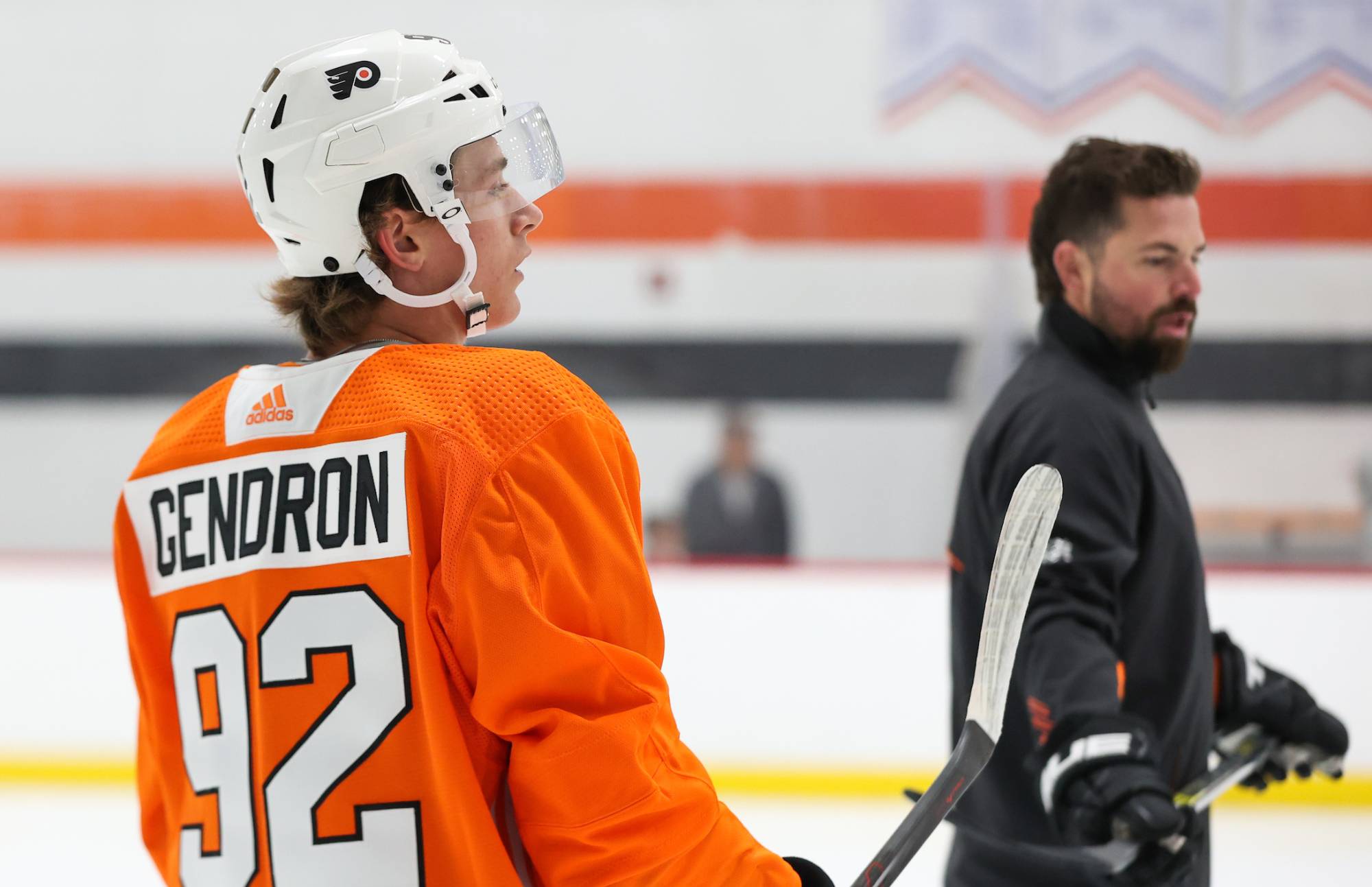The Flyers did not do that hockey very well through two periods, but dominated the third period, overcoming 3-1 and 4-3 deficits to earn a loser point before falling in a shootout to the Red Wings on Tuesday night.
The loss dropped the Flyers into the first wild card slot with Columbus’ win over the Rangers. Florida also won, and continues to remain five points behind the Flyers but with three games in hand. The good news is that the Sharks won a blowout win over New Jersey.
Here are five things we learned from a disappointing, but not totally lost night for the Flyers.
Third period blitz saves the night
Evgeny Svechnikov’s first NHL goal gave Detroit a 3-1 lead headed to the third and what looked like cruise control given how the Flyers played in the first 40 minutes, but a furious third period rally salvaged a point for the Orange and Black.
The Flyers flat-out dominated the third with a Corsi For of 84% in the frame. They scored three times and were credited with seven high-danger chances per NaturalStatTrick. Shots on goal were 16-4 in favor of the Flyers and Red Wings’ goaltender Jimmy Howard barely got a chance to breathe. The uptick in shots resulted in a couple of cheap third period goals as pucks hit off Read and Travis Konecny on their way into the net, but those chances were created by getting more pucks to the net.
What’s frustrating is that the Flyers shouldn’t have needed that furious of a third period rally against a team in Detroit that was all but eliminated from the playoffs and riding a 10-game losing streak. Making matters worse is just how bad the Flyers were for the first 40 minutes in this one, but more on that in a second.
That was some kind of a bad first two periods
The Flyers were just awful through 40 minutes in this one, and were lucky to be playing a team as bad as Detroit to be able to play a third of a game and still somehow get a point.
They had just 14 shots through the first two periods, and posted Corsi For percentages of 38% and 44%, respectively. Even worse was tallying just 25 total shot attempts through the first two periods facing a team ranked 24th in goals against per game and a goalie (Jimmy Howard) with a very pedestrian .909 save percentage and a 2.89 goals-against average coming in.
Not only were shot attempts an issue, but shot selection wasn’t good either. The Flyers weren’t crisp passing the puck, and when they did get into a shooting position they fired a slew of pucks into Red Wings bodies on the way to Jimmy Howard’s crease. Detroit blocked 25 shots on the night (Flyers had 12) and did a good job getting in lanes, but the Flyers really struggled moving the puck quickly or efficiently enough early on to break down a tight checking Red Wings club.
Things changed in the third period as the Flyers realized the importance of the game and got more aggressive in all three zones and got rewarded in the end, but even so there’s no ignoring how bad they were for most of this one.
The big three continues to pile up the numbers
Couturier gets his 100th NHL goal. pic.twitter.com/JYeFAk4Tl3
— NHL GIFs (@NHLGIFs) March 21, 2018
What more can you say at this point about Sean Couturier this season. It’s hard to imagine where the Flyers would be without him and he’ll get a long look as a Selke Trophy candidate. With a goal, his 30th of the season, and an assist, he’s now the third Flyer to eclipse 70 or more points this year along with Claude Giroux and Jake Voracek.
They are the first Flyers trio since Simon Gagne, Mike Richards and Jeff Carter in 2008-09 to all top the 70-point barrier. Given the mass of points the three are racking up, it’s wild to think they haven’t played on the same regular line in months, though they do buoy the Flyers’ lethal top power play unit together.
One of the main reasons Couturier’s offensive game has taken off this year has been his time on that first power play unit along with Giroux and Voracek. Brayden Schenn racked up 17 power play goals with those guys last year, but Couturier has put up seven this year while already contributing five more goals in all situations than Schenn did a year ago (25).
Mrazek’s return to Motor City stalls
The Red Wings first made Petr Mrazek available in the Vegas expansion draft during the summer, then shopped him around the trade deadline before eventually dealing him to the goalie-starved Flyers when Brian Elliott and Michal Neuvirth succumbed to long-term injuries.
Given how easily the Red Wings were able to try and move on from their one-time goaltender of the future, you can bet he wanted to come back to Detroit and show his old club they made a mistake in dealing him. That just did not happen for Mrazek on Tuesday night, quite the opposite in fact.
Mrazek was yanked by Hakstol with 10:03 left in the second period after Detroit’s third goal. It was the third goal in 3:49 for the Red Wings, two of which beat Mrazek from distance and were from players in lengthly goal droughts. He made 16 saves on 19 shots, and has an .865 save percentage and a 3.55 goals-against average in his past nine games.
Dylan Larkin, owner of a 17-game goal drought, opened the scoring on a 2-on-1 that was defended pretty well as Radko Gudas took away the pass but ended with Mrazek was no match for Larkin’s wrist shot. The next goal was a back-breaker, a shorthanded goal to Luke Glendening, who was in the midst of an 18-game goal drought. Glendening just cruised down the right wing and ripped a quick shot over Mrazek to make it 2-0 Detroit. It was a good shot, but a momentum shift as the Flyers were aiming to tie things up at the other end and not counting on going down two at that point.
The third goal was a breakdown from nearly every Flyer on the ice. Detroit had the Flyers back on their heels after Sean Couturier’s goal and took advantage as the Flyers couldn’t get the puck out of their own zone and Mrazek struggled to find a couple of loose pucks off blocked shots in front of him. On a third try, Evgeny Svechnikov was able to beat Mrazek, who was flying all over his crease in an effort to track the puck.
It’s the second time in his past three starts he’s been pulled and then went and appeared to have a tense conversation with his coaches after leaving the ice before storming down the tunnel. It’s safe to say he might not make the start against the Rangers on Thursday, especially given how well Alex Lyon (11 saves on 12 shots) played in relief in this one.
Alex Lyon pitches near-perfect relief appearance
Meanwhile, Alex Lyon, the man who GM Ron Hextall felt the Flyers needed to replace with Mrazek at the trade deadline, just continues to plod along when his number is called. In relief appearances this season, Lyon has stopped 59 of the 61 shots he faced (.967 save percentage) while he has just an .849 save percentage in games he’s started.
While his sample size in relief is much small, obviously, he was very good coming in for Mrazek in this one and made some key saves down the stretch to keep the Flyers alive for any type of points. He was especially good in overtime, stopping all five shots as Detroit carried play after the Flyers started the extra session with a 4-on-3 power play that carried over from regulation.
What makes things interesting is that Lyon’s play combined with Mrazek’s so-so outing could leave the door open for the former Yale standout to get an important start against the Rangers. Lyon has been far better lately than Mrazek, but who knows how much confidence Dave Hakstol truly has in him since Hextall did go out and get Mrazek at the deadline. Then there’s Michal Neuvirth, who is practicing and seemingly close to returning and forcing one of Mrazek/Lyon to the press box.
There could be a lot of moving parts within the Flyers’ crease in the coming days, but what Alex Lyon did on Tuesday night continued a string of stepping up when the Flyers’ starting goaltender put the team in a tough spot.
Penalty kill continues to make progress
All of a sudden the Flyers have killed off eight-straight penalties over their last four games. Since giving up two goals in two chances to Vegas back on March 12, they’ve blanked Columbus, Carolina, Washington, and Detroit, all teams with some firepower on the man-advantage.
Detroit managed two shots on their lone power play in the first period, but both were turned aside by Mrazek and cleared by the Flyers penalty kill. Clears have been part of the issue on the penalty kill all season and have frequently resulted in tired bodies left out for long portions of man-advantages. No doubt you’ve gotten sick of Jim Jackson uttering the all-too-familiar, “and the Flyers fail to clear” shortly followed by a power play goal against.
But of late the Flyers’ penalty killing forwards have provided better support to the defense in helping get loose pucks out of corners and the defense has been more aggressive in selling out and firing pucks up and out of their zone. While as a team the Flyers aim to block and prevent shots on the penalty kill, at least in recent games they’ve focused more on fighting aggressively for loose pucks and getting clears rather than trying to absorb shots for a full two minutes.
The Flyers’ power play found the back of the net twice against Detroit, but another disciplined game and a clean sheet on the penalty kill allowed the Flyers to hang around long enough to turn their game around in other areas.









